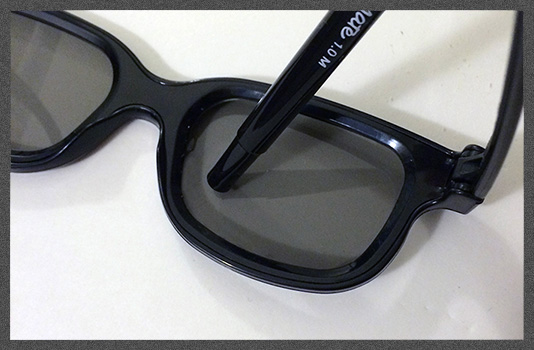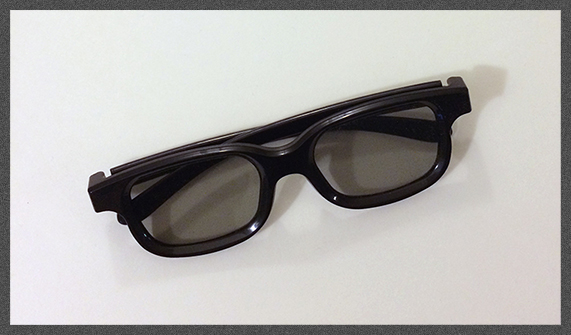Saturday, October 2nd, 2010
Like many people, I rushed to theatres in late 2009 to watch Avatar in stereo 3D. I viewed it with a large group of people and found that several members of the party experienced nausea or fatigue throughout the film. It turns out a significant percentage of the population1 is either stereo-blind or experiences discomfort when viewing 3D content, so this result isn't too surprising.
Immediately after finishing my first viewing of Avatar, I drove across town to catch a second showing using a different stereo technology and made a few observations that I believe may have contributed to viewer discomfort.
Ultimately, even the best stereo 3D content will still cause discomfort for some percentage of the population due to the inherent nature of the technology. As a result, given a sufficiently large group of moviegoers, some percentage is likely to prefer a 2D version over a 3D one. In these circumstances, a simple tweaking of the free 3D glasses given out at the theatre will allow a viewer to watch a 3D movie in the comfort of 2D.
De-3D Glasses
A simple modification to a pair of passive stereo 3D glasses will enable the wearer to watch a 3D movie but perceive it in 2D, and thus without any stereopsis induced discomfort or fatigue. The following is a simple guide that can be completed in a movie theatre in about two minutes.
For this guide we'll be using the standard Real-D glasses that are handed out for free at the theatre. We'll need an even number of them so you may need to ask the attendant for an extra pair.
This process requires two pairs of 3D glasses, but will produce two pairs of De-3D glasses in return.
Note that attendants are not technically supposed to hand out extra pairs of the glasses, but I've never had a request denied.

We'll also need an adhesive for this process. I prefer to use a glue gun at home, but tape or a quick drying glue is recommended when performing this in a theatre.
The reason we've chosen Real-D glasses is because of the following two reasons:
The lenses on these glasses are easy to dismantle. We're optimizing for ease of construction and speed so that the process can be readily performed in a theatre with little to no preparation.
These glasses are circularly polarized as opposed to linearly polarized. Although this isn't a great concern, it means that we do not need to be quite as precise when reconfiguring our filters (later step) as we would need to be if we were using linearly polarized glasses.
Step One: Lens Removal
Our first step is to remove the LEFT lens from our first pair of glasses, and then remove the RIGHT lens from the other pair. The lenses on these Real-D glasses are not secured, so we can pop them out by applying a light blunt pressure to the lower and inner side of the lens. I use a pen or pencil eraser as shown in the image below.

The lenses will pop out relatively easily once the initial portion is ejected. Be careful not to scratch, tear, or bend the lenses, as this may reduce their overall effectiveness.
Step Two: Lens Swap

Once we've removed the lenses from each pair of glasses, we will swap them and reattach to the other pair.
For example, in our image to the left, we remove the RIGHT lens (from our perspective) from the lower pair and attach it into the LEFT slot of the top pair.
Similarly, we remove the LEFT lens from the upper pair and attach it to the RIGHT slot of the lower pair.
Be careful to avoid accidentally flipping the lenses so that we preserve their direction.
When reattaching a lens onto the opposite pair, the lens should not "fit" neatly into the surrounding frame. If it does, then you have likely flipped the lens and should double check your work.
Step Three: Reattaching the Lenses
Our next step is to reattach each of the lenses to their new frames. In a theatre, a quick solution is to simply apply tape or a quick drying glue to affix the lenses to their frames, and this should suffice for the duration of the film. Given more time, the lenses can be glued to their frames using a hot glue gun or other stronger adhesive.

In either case, place the glasses face down and lay the appropriate lens over the empty slot. Apply the adhesive to several spots along the inside of the frame, forming a bond between the lens and the frame. Recall that the lenses do not need to be perfectly oriented, as some rotation is acceptable (but no flipping!).
Conclusion
Stereo 3D theatres present a unique image to each eye by projecting polarized light and using head mounted polarized light filters (i.e. the glasses). By swapping the lenses between two pairs of these glasses, we've enabled one pair to exclusively filter the left image, while the other pair only filters the right image. As a result, the wearer will perceive a single image with both eyes, which should completely eliminate the nausea typically experienced with a stereo 3D film.

Upon completion of the steps above you should have two pairs of De-3D glasses that look indistinguishable from regular 3D glasses upon casual observation. Wearing either of these glasses enables a viewer to watch a stereo 3D film but perceive it in 2D.
More Information2
A number of new resources have popped up for generating 3D-to-2D glasses. Most notably, you can now purchase 3D-to-2D glasses from several online retailers, including Amazon.
1 Article updated to reference more recent research, 2013.
2 Article updated with information about other available resources, 2014.